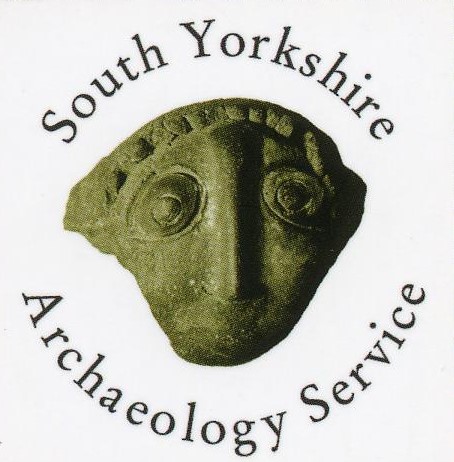Shrunken village of Long Sandall
Location/Address
Land adjacent to Clay Lane West - road passing through Long Sandall, Doncaster DN2 4QY
Type
Other site, structure or landscape
Assets that cannot fit any of the other categories. This category includes sites of archaeological interest, where the original form and function may not be apparent without the use of archaeological techniques and interpretation.
Description
The village existed before the 11th Century, being recorded in the Domesday Book, and has been occupied since then. It had some of the earliest social housing in the country - two pairs of (Grade 2 listed) farm workers cottages. However, the village had almost disappeared by the late 20th century.
It was due to the dedication and hard work of a small number of committed individuals that the Manor House, Rose Cottage, Poplar Farm and The Cottages were saved from dereliction. The village provides a continuous timeline undisturbed by modern development. Recent archaeological assessments have uncovered evidence of at least three phases of activity, dating to the Roman, medieval and Post-medieval periods. However, the demolition of several properties including the recently inhabited Manor House and the remains of White House, White Cottage and Poplar Farm give rise to grave concerns over the future of the village. Long Sandall and its historic setting is in danger of disappearing without protection. A document "Long Sandall - Domesday to Oblivion" which provides a history of Long Sandall by former resident Paul Stamp has been included as a link in the comments, along with "Long Sandall - A Cause for Concern".
Statement of Significance
Asset type
Long Sandall provides a long, continuous timeline of archaeological evidence from medieval settlement to the current date. Historically the village developed primarily as an agricultural settlement although the adjacent Sandall brickyards were developed in the early 19th century (currently Sandall Park). Whilst the village has changed over time, the form of the village remains mostly intact and traceable.Age
Full timeline from medieval settlement to current date as shown in the accompanying documents.Rarity
Extracted from assessment of archaeological investigations at Long Sandall: "The evidence of medieval settlement is rare and can contribute to studies of how the modern settlements developed and flourished. It is of regional significance."Architectural and Artistic Interest
The south end of Long Sandall village remains substantially intact with early and mid C19 properties extant and occupied. Earlier properties (such as the Wheatsheaf Public House, which occupied the site of the later (1867) Grade 2 listed cottages, are recorded. Other long established properties (e.g. The Cottage (as distinct from The Cottages), White House, White Cottage, Poplar Farm and Farmhouse, the Railway Cottages and the original C18 Lock Cottage remain as demolished substructures currently without recent redevelopment destroying the remains.Group Value
Evaluation has demonstrated that the area contains archaeological remains of regional (medieval and later settlement) and national (Roman fort) importance. The village provides a continuous timeline undisturbed by modern development and includes Grade 2 listed cottages.Historic Interest
A detailed history of Long Sandall village is given in the accompanying document "Long Sandall - Domesday to Oblivion", which has been sent separately to SYAS. In brief and extracting a few headline points: Saxon lords Scotecol, Ulsi and Ragenald owned Long Sandall when The Confessor was king. Magna Carta records it passing to the Earl of Morton. It was then held by Nigel Fossard. Several generations of Morleys were Lords of the Manor before title passed to Doncaster Corporation in the late 15th century. John de Sandal, Lord of Wheatley and perhaps a local man, became Bishop of Winchester in the time of Edward II. Vermuyden drained the surrounding land for Charles I, alienating the people whose living depended on marsh and fen. 18th century industrialists financed and built navigations, locks and weirs, and Victorian railway builders hemmed Long Sandall with iron rails. Long Sandall has had various names in the 900 years of its history: Sandalie, Sandela, Sandal(i)a,-e 1086 Parva(m) Sandhale 1285 Parva Sandal(e) 1291 Parva Sandall 1428 Sandall Parva 1548 Long(e) Sandall 1586 Sandal Parva 1673 Long Sandal 1740 Near Sandall 1817 After 600 years of quiet pastoral existence, outside influences created a new Long Sandall - a mixed community of agricultural, brick, railway and canal workers, which was to survive for a further 150 years. Descriptions of the village as it was in the second half of the last century show it to have been a pleasant venue for fishing excursions and Corporation galas.Archaeological Interest
The evidence of medieval settlement is rare and can contribute to studies of how the modern settlements developed and flourished. It is of regional significance. Post-medieval activity has impacted upon the significance of earlier remains in some areas of the site.Images and Documents
Date Listed
24 Apr 2024
Last Updated
20 Jan 2023
Comments and Feedback
Do you have any questions or more information about this record?





.jpg)
.jpg)




